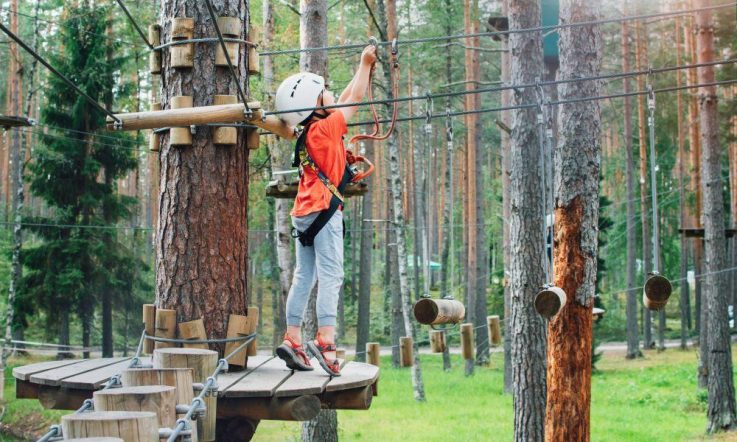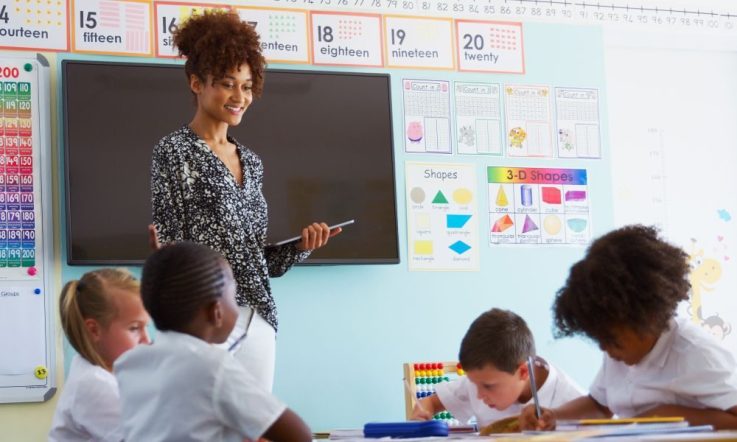Hello, Dominique Russell here from Teacher magazine and I’ll be your host today, but before we get into the episode, I wanted to share some exciting news: Little J & Big Cuz is nominated for Best Children’s Program in the 2025 Logies! This beloved series is created by Aboriginal and Torres Strait Islander communities to support deeper understandings of Country and community, as well as preparing young learners for school. If you’re listening to this episode as soon as it goes live on 31 July, voting for the Logies closes tomorrow on 1 August. Support the show and cast your vote online today at littlejandbigcuz.com.au.
Thanks for tuning in to this episode of Teacher Staffroom, where we catch you up on the latest evidence, insight, and action in education.
Thinking about your own school, how are you helping students understand the many opportunities and pathways open to them, and the training or further education requirements they’ll need to reach their career goals? We know schools play a crucial role in supporting post-school pathways, and recently at Teacher we’ve been exploring many facets of careers education. Today’s episode of Teacher Staffroom will bring you up to date with this coverage, and I’ll also share some of my other recent highlights from our content – which, by the way, is freely accessible at any time over at our website, teachermagazine.com. Don’t forget, like all of our other episodes of Teacher Staffroom, I’ll be posing some questions for you throughout this podcast, so feel free to pause the audio as you go, gather some colleagues, and discuss together how these stories might be relevant to your school context. Let's jump in.
One piece of data you might be interested in, to help you with your careers education planning in your own school setting, is the career expectations of teenagers at the moment. A new report from the OECD draws on PISA 2022 data to reveal the latest top 10 most popular expected occupations of 15-year-old girls and boys from all over the world. Interestingly, they also compared this to the same data that was collected in the year 2000 to see how career expectations are evolving over time. We published an infographic on this which shared the comparative data from the year 2000 and the year 2022 and I found some of the changes over time really interesting – for instance, the top career expectation of girls in the year 2000 was teacher, but now it’s doctor. For boys, though, there’s been no change in the most-expected career for the 22-year period – it’s still ICT professional. It’s also interesting to see careers like hairdresser and writer fall off the list for girls from the year 2000, and in 2022, architect, police officer and actor appeared for girls. As for the boys, science/engineering professional made the top 10 in 2000, but it didn’t get there in 2022. However, managing director/chief executive appeared in 2022 which feature back in the year 2000.
Of course, there’s much more to post-school pathway planning than career expectations of teenagers. To chat more broadly about careers education and pathway planning in schools, I had the pleasure of speaking with Careers Advisor at Arthur Phillip High School in New South Wales, Stephanie Malnar. I spoke to her about the work she’s doing in her context to support students’ post-school pathways, and it was fascinating because the school has around 1,650 students, so she’s certainly kept extremely busy. In the article, Stephanie shared how she works with students in a range of ways – everything from arranging work experience placements to careers excursions or maintaining university partnerships – but, really, it was her use of data to inform the supports she provides to her students that I wanted to focus on with you here. For example, Stephanie told us that she uses the New South Wales Post-School Destinations and Experiences Survey to see what the post-school destinations of students are looking like, and that she also sends out her own survey to students to find out if they’re considering vocational, university or employment pathways. Here’s a quote from Stephanie explaining how she uses the data from these surveys:
That allows me then to invite guest speakers to the school. So, for example, this term I’ve had 6 different universities … present to our students about course offerings, scholarships, direct pathways and alternate pathways. That's very well received by our students. And the universities love coming to our school because our students ask so many questions; they're very highly engaged and very aspirational. Data is [very] important because otherwise you're just guessing as to what their needs and aspirations are.
So, that brings me to a question for you to think about. As a careers advisor, what data do you utilise to inform the support you offer to students with their career development? Does your state or territory run a post-school destination survey? Is there an opportunity to survey students yourself to ascertain where their interests lie?
You’re listening to podcast from Teacher. We’d love to tell you more about Little J & Big Cuz. Starting life as an ACER-led initiative, this popular television program has positively impacted children across Australia and around the world, by celebrating First Nations culture and supporting early learning. Discover more and cast your vote today at littlejandbigcuz.com.au.
Another school who shared their story with us recently is Templestowe Heights Primary School in Victoria. Principal Rhys Coulson spoke with Teacher Deputy Editor, Rebecca Vukovic, about an initiative they have in place that involves hosting visits from other educators at their school. Templestowe Heights Primary School implemented explicit teaching into their program about 4 years ago, and with all Victorian government schools moving to structured phonics and explicit instruction for prep to grade 2 students, many visitors are keen to see the approach in action. So, for 3 hours every Friday, they open their doors to staff from other schools to share their leadership expertise and to watch their classrooms in action. To date, they’ve hosted over 200 other schools, not only from across Victoria, but interstate and international visitors as well – representing all school sectors, as well as regional and remote schools. In the article, Rhys explained to us that visitors are taken through many classrooms in the school and that they typically want to know how the school started on their journey, what knowledge they needed, and what mistakes were made along the way.
On the impact these visits have on Templestowe Heights Primary School staff, Rhys had this to say:
I just love watching and seeing all of our staff grow professionally. I get a really big kick out of that. It has enabled many of our staff to present at many conferences. They consult with other schools. They're writing their own curriculum. We had a couple of staff that wrote the lesson plans for the Victorian Department of Education. So, it has opened up a lot of doors for our leadership team here.
So, considering this story then, here are a couple questions for you to reflect on. How often do you open your classroom to allow other educators to watch your practice in action? Have you found this to be a beneficial experience? How could you improve the way you share your expertise with others?
Rhys isn’t the only school leader we’ve been speaking to recently. Of course, we caught up with our guest for Series 3 in our School Assembly podcast, Dan McShea, who is the Foundation Principal at Notre Dame College in Queensland. If you’re unaware, School Assembly is the series where we follow a Foundation Principal for 12 months to find out what’s involved in building a new school from the ground up.
This most recent episode was actually the last in Series 3, so our Editor Jo Earp reflected with Dan on his journey so far. It was really insightful to hear Dan think back on the past 12 months that we’ve been following along with his journey, and the expectations he had when he initially started in this role as Foundation Principal – things like anxieties around messing something up, the importance of setting up the school culture and just getting through the huge To Do list that he had. Here’s a short clip from Dan reflecting on that and telling us about where he’s at now:
And look, now that the school’s open and we’ve had a had a good start, we’ve developed a strong culture. Most of those anxieties have been alleviated. Now they shift to the next wave of recruitment and the next wave of building and the students that will join us next year. But we’re really proud to say that this is a vibrant, innovative community with a very strong family spirit and staff that love coming to work and that’s evident in every staff member. That’s pretty contagious for our kids and for our parents and for the entire community. And so the reality of all that planning and all that work coming to life this first semester has, you know, absolutely been way, way more rewarding than I could have possibly anticipated and that’s thanks to the collective effort of what’s a great team and a great community.
That was Dan McShea there. In case you didn’t know, we ask our principal guests on School Assembly the same question for each episode: what was their proudest achievement, biggest hurdle and key learning of the past month? So, if you’re a school leader listening to this, I invite you to reflect on the last few months, and think about your proudest achievement, biggest hurdle and key learning.
That’s all I have for you today. Thanks for listening. I’ll leave the links to the full articles and podcast episodes I mentioned today in the transcript of this podcast, which you can find under the podcast tab at our website. We’ll be back with a new episode very soon.
Support Little J & Big Cuz today! Visit littlejandbigcuz.com.au for links to watch episodes, lessons plans and more.



